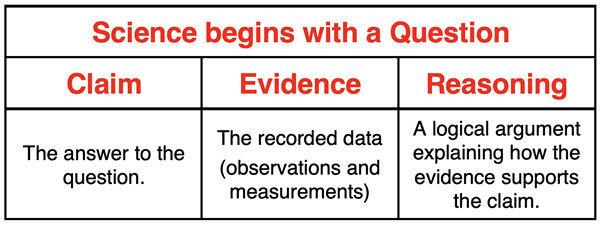
Fall Science CER Activities | Leaves, Migration & More - Science Ideas for 2025
Share
Reading Time: ~2 minutes
 As leaves burst into brilliant reds and oranges outside your classroom windows, capitalize on your students' natural curiosity about fall with these three engaging CER activities that connect seasonal changes to core science concepts.
As leaves burst into brilliant reds and oranges outside your classroom windows, capitalize on your students' natural curiosity about fall with these three engaging CER activities that connect seasonal changes to core science concepts.
These aren't artificial scenarios—students analyze real data about leaf pigment changes, bird migration patterns, and decomposition rates. Each activity transforms observable autumn phenomena into opportunities for authentic scientific reasoning while building the evidence-based thinking skills students need for assessments.
The beauty of fall-themed activities? Students are already noticing these changes happening around them. When they can explain why leaves change color or how birds know when to migrate, science suddenly becomes less abstract and more personally relevant.
[Download FREE Fall CER Activities]
Why Fall Science Activities Work
October and November present unique teaching opportunities. Students are curious about the dramatic changes happening in nature, making this the perfect moment to introduce complex concepts through familiar phenomena. Fall-themed CER activities leverage this natural interest while building critical thinking skills that transfer to standardized assessments.
Three Ready-to-Use Fall CER Activities

Activity 1: Leaf Pigment Chemistry Students analyze data showing how chlorophyll, carotenoid, and anthocyanin concentrations change from September through November. The revelation? Leaves don't "gain" fall colors—they were there all along, masked by chlorophyll. This activity powerfully demonstrates that scientific observation often reveals hidden truths about everyday phenomena.
:max_bytes(150000):strip_icc()/GettyImages-641101778-b5ce934c6bcf428abf993f722af580d3.jpg)
Activity 2: Bird Migration and Day Length Why do thousands of birds migrate at almost the exact same time each year? Students examine the relationship between decreasing day length and migration intensity, discovering how evolution has shaped birds to use reliable environmental cues. The data clearly shows peak migration occurring right around the fall equinox—a pattern that repeats with remarkable consistency.

Activity 3: Temperature and Decomposition That thick carpet of fallen leaves on the forest floor tells an important story about nutrient cycling. Students compare decomposition rates at warm versus cool temperatures, discovering why fallen leaves don't immediately disappear and how seasonal temperature changes regulate nutrient availability for spring plant growth.
What Makes These Activities Effective
Each activity includes interactive graphs that students can analyze, detailed background information that builds content knowledge, and sample student responses that model high-quality scientific reasoning. They're aligned to both NGSS and TEKS standards, making them perfect for diverse classrooms.

The CER framework guides students through sophisticated thinking: making specific claims, citing precise evidence from data, and explaining the scientific principles that connect evidence to conclusions.
Implementation Tips
These activities work beautifully as bell-ringers during October and November, assessment preparation that doesn't feel like test prep, or deeper investigations when you have extended class periods. Students can work individually or collaboratively, and the real-world context naturally generates discussion and questions.

